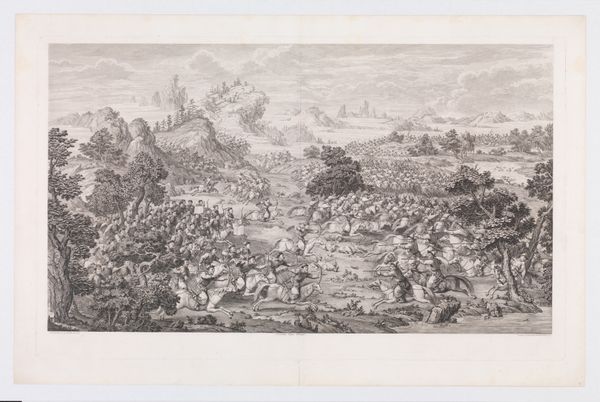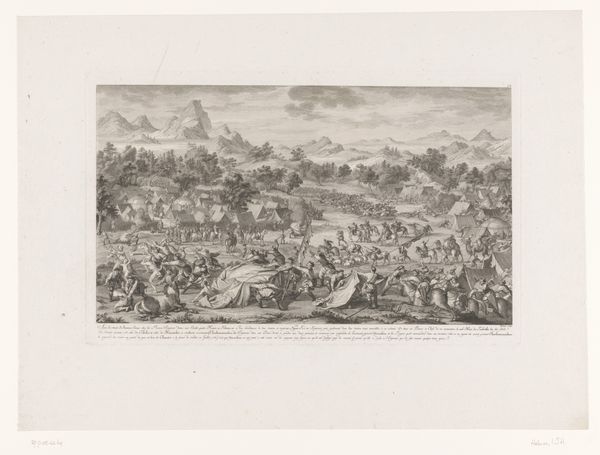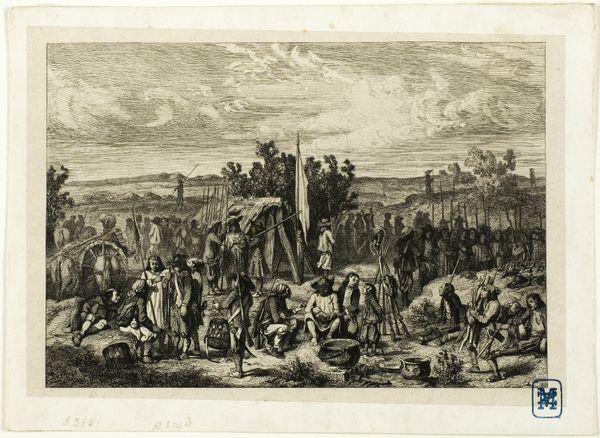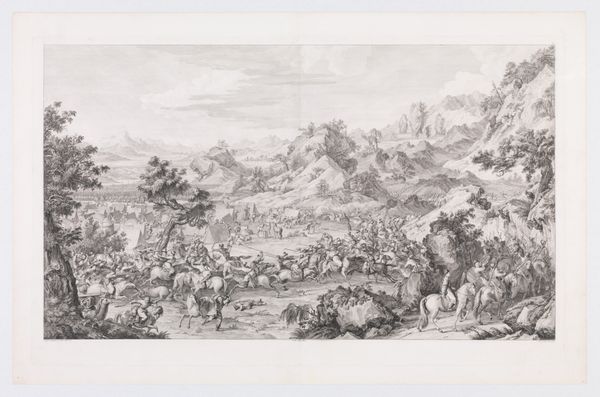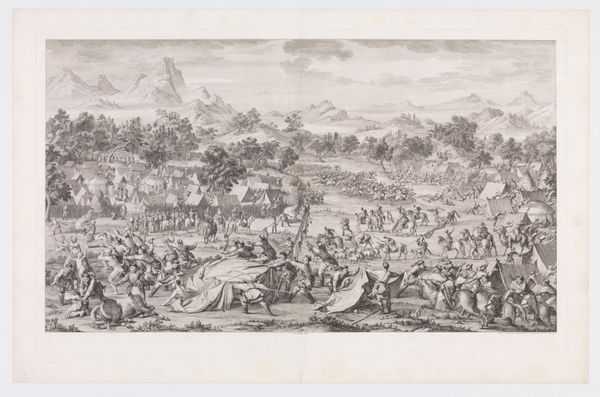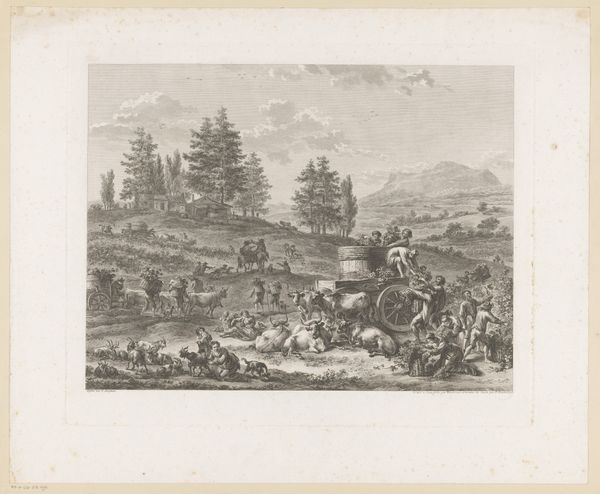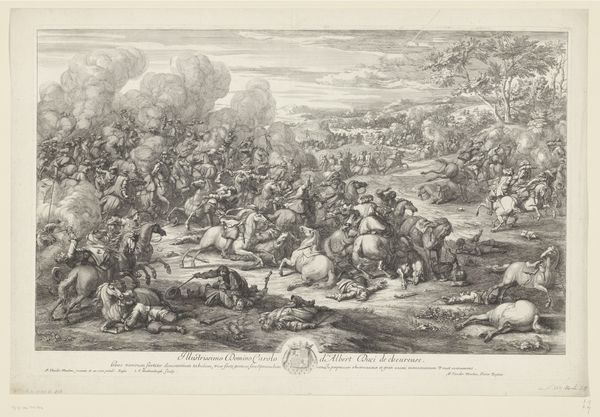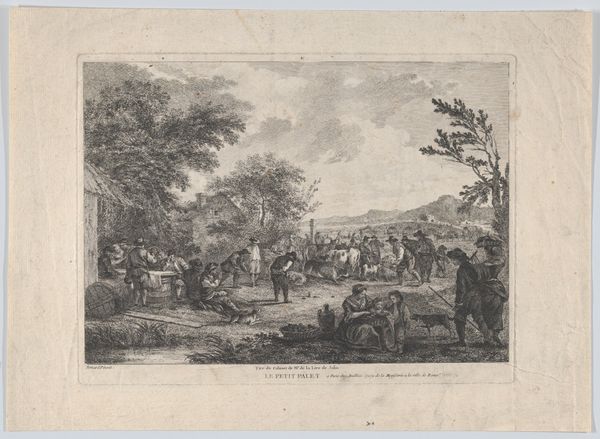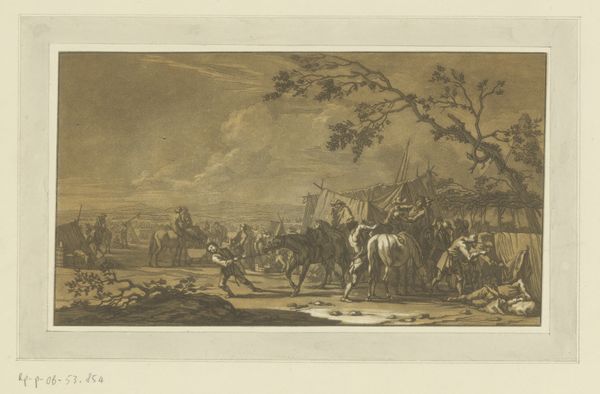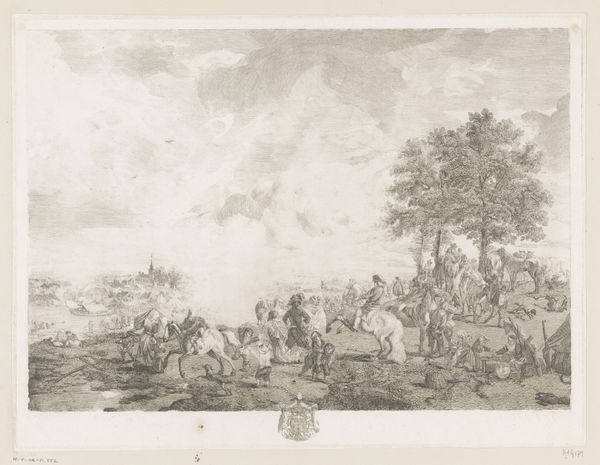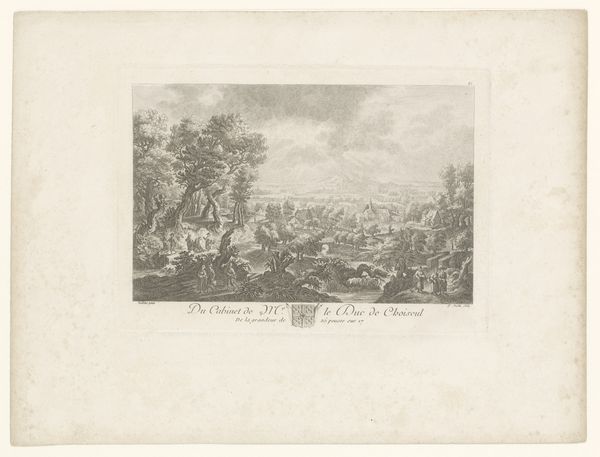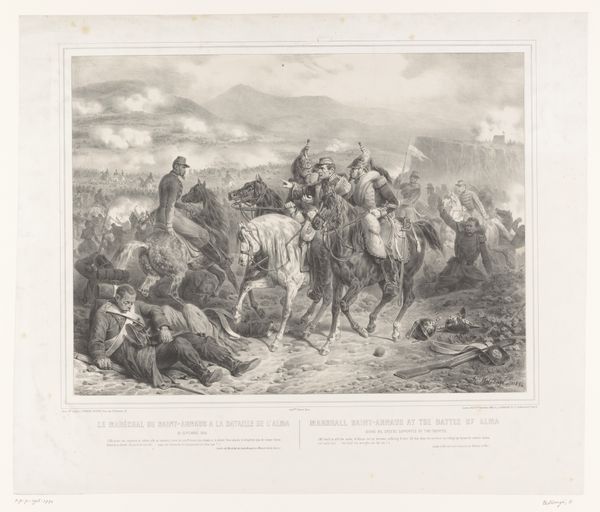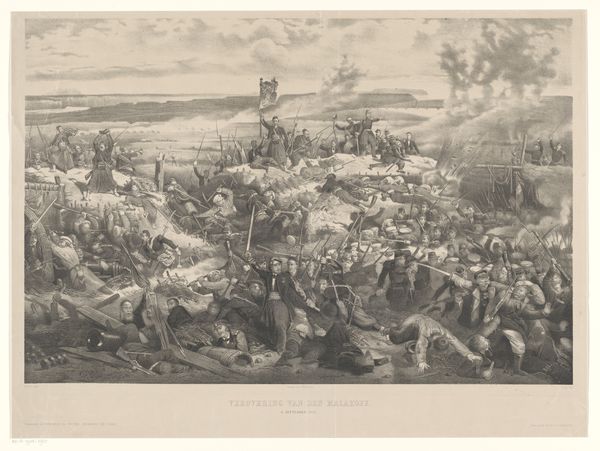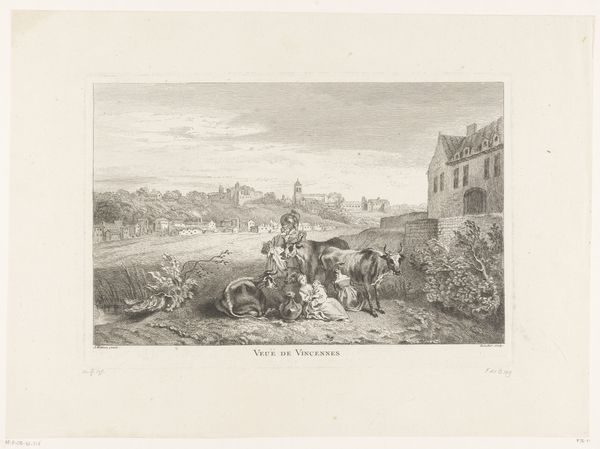
print, engraving
#
narrative-art
# print
#
landscape
#
figuration
#
line
#
history-painting
#
academic-art
#
engraving
#
realism
Dimensions: 320 mm (height) x 385 mm (width) (plademaal)
Curator: This print depicts the "Battle of Turin, 1706," an engraving by Edvard Sonne, dating from around 1836-1840. It's currently held at the SMK, Statens Museum for Kunst. Editor: My first impression is one of controlled chaos. The sheer number of figures is overwhelming, but there's a clear recession into space and a definite effort to contain the frenzy within a legible composition. It almost feels like an attempt to make sense of the senselessness of war. Curator: Absolutely. Sonne utilizes line work masterfully to create a sense of depth and distance. Observe how the foreground figures are sharply defined, gradually fading into the blurred forms in the background where the battle still rages. It's a clever way to convey both the immediate impact and the vast scale of the event. And in his way of showing the battleground itself – a landscape, notice the influence of Romanticism on his historic vision? Editor: I am also struck by how depersonalized the violence appears. These aren't individual heroes or villains, they're pieces on a game board—symbols themselves rather than unique figures, aren’t they? Consider their weapons, and armors—we feel cultural continuity. Curator: Precisely. These figures act as representative symbols, embodying the forces at play in a significant moment in European history. The Battle of Turin was a pivotal event in the War of the Spanish Succession, securing Turin and ultimately contributing to the containment of French expansion. Editor: Seeing how the battle and historic details merge so intricately, how does Sonne represent and influence ideas about nation, conflict, and perhaps even memory? He uses symbols, which through historical knowledge and our subconscious may unlock new readings of this work. Curator: He presents a meticulously detailed but also somewhat idealized view of war, perhaps reflecting the nationalist sentiments of his time, aiming to engrave not just the image of a battle, but of national consciousness, the psychological implications of war. This depiction invites us to consider how historical events are interpreted and used to construct cultural identity. Editor: A visual archive meant to impress future generation. Thinking about the use of academic style in visualizing war makes me reflect on the many layers present in Sonne’s interpretation of collective memory and trauma. Curator: Yes, a really impressive historical document viewed from so many different angles. Editor: It offers us a potent glimpse into 19th-century perceptions of conflict and national narrative.
Comments
No comments
Be the first to comment and join the conversation on the ultimate creative platform.
